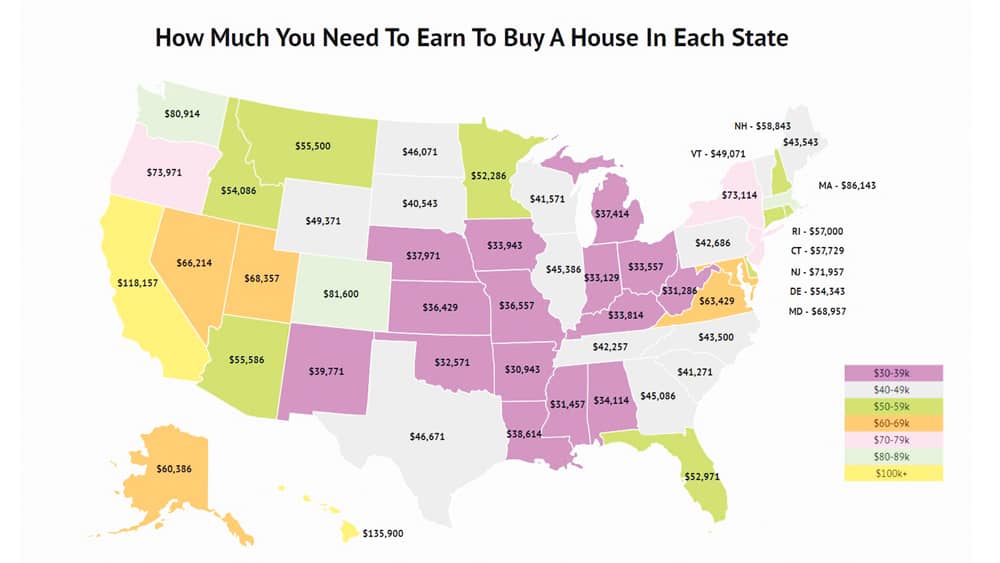
Minority Homeownership
Minority homeownership stubbornly lags behind the national rate, with Black Americans facing some of the toughest hurdles to achieving this essential part of the American Dream, according to the National Association of Realtors (NAR). The homeownership rate for Black Americans—42 percent—is nearly 30 percent less than the rate for white Americans (69.8 percent).
The U.S. homeownership rate stands at 64.2 percent, with the rates for Asian and Latino Americans at 60.7 percent and 48.1 percent, respectively.
The report, “Snapshot of Race & Home Buying in America,” by the National Association of Realtors examines the homeownership rate among each race in 2019 using American Community Survey data by state and the changes in the homeownership rate by race from 2009 to 2019. Using additional data from 2020, the report looks into the characteristics of who purchases homes, why they purchase, what they purchase and the financial background for buyers based on race.
“This data reinforces the need to implement key policy initiatives NAR developed in concert with the Urban Institute and the National Association of Real Estate Brokers to address the Black homeownership gap,” said NAR president Charlie Oppler in a prepared statement. A Realtor from Franklin Lakes, N.J., he is also the CEO of Prominent Properties Sotheby’s International Realty. “Specifically, this five-point plan developed in 2019 calls on the nation to advance policy solutions at the local level; tackle housing supply constraints and affordability; promote an equitable and accessible housing finance system; provide further outreach and counseling initiatives for renters and mortgage-ready Millennials; and focus on sustainable homeownership and preservation initiatives.”

NorthBay Family Homes: An Impressive Legacy
After more than four decades of affordable-housing project development, Northbay Family Homes (NFH) will close operations this year, deciding it’s time for the next generation of community-minded developers to take the lead in affordable-housing projects.
NFH leaves an impressive legacy. Its first project, the Encina Court Condominiums, was purchased by low-income families with construction and financing arranged by NFH—a first in California—and was completed in 1978.
Under leadership of Clark Blasdell and its board of directors, including Charlie Carson, Paul Simmons and Kristie Wheeler, NFH met the challenge of building in Marin County’s dynamic landscape, completing its most high-profile project, Hamilton Field in Novato, to great fanfare. The development encompassed more than 700 properties for low-income families, complete with construction and mortgage financing provided by NFH.
“They have been leaders in advocating legislative rules to provide affordable housing that is so critical to our economy,” said longtime Marin County Supervisor Judy Arnold, in a prepared statement. “I thank Clark, the board, and the entire team on a legacy well earned over many years.”

In total, NFH invested $154 million in the Bay Area to build 4,014 homes that served 9,978 people. Blasdell, in a prepared statement, said that building all those homes wasn’t an easy task, but he still enjoyed every day on the job. “I have always believed that if you love what you do, you’ll never work a day in your life.”
Wheeler, as a representative of the board, said Blasdell should be recognized for his accomplishments at NFH. “Our work on the board was to be there to back him up and to provide our individual expertise, as needed,” she said. “I think that I speak for all of us that we were proud to have participated.”
Sonoma County Joins the 100-Day Challenge
Sonoma County is joining Santa Barbara and San Francisco counties in accepting Gov. Gavin Newsom’s 100-day challenge to address the homelessness issue.
The state has made $650 million available as homeless emergency aid for 2021. Amber Twitchell with On the Move, Anita Maldonado with Social Advocates for Youth, and Tom Bieri with Community Support Network are Sonoma County’s three sponsor-mentors for the challenge.
Sonoma County made a commitment to connect 65 transition-age youth to housing as its county-specific goal for the 100-day challenge with a specific focus on youth who identify as LGBTQ+ and identify as Black, Indigenous or as a Person-of-Color.
“By way of update [in February], 59 transition age youth have moved into stable housing and another 32 have housing choice vouchers,” says Daniel Virkstis, Sonoma County’s public information officer. “In total, 91 transition age youth have found support surpassing the initial goal of 65. Challenges do remain in limited capacity both for staff time during the pandemic and housing stock, particularly HUD-defined affordable housing.”



